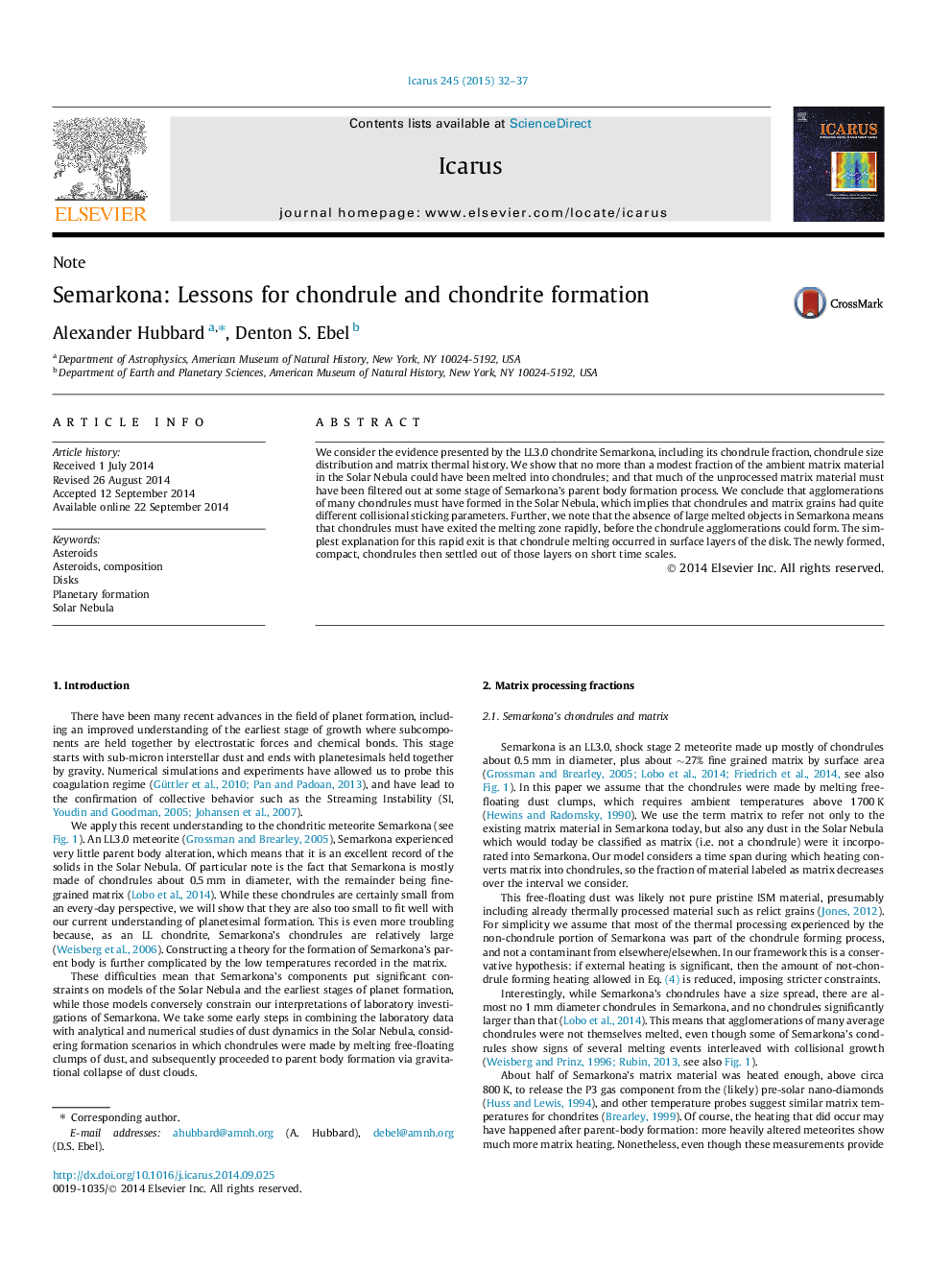| Article ID | Journal | Published Year | Pages | File Type |
|---|---|---|---|---|
| 8137357 | Icarus | 2015 | 6 Pages |
Abstract
We consider the evidence presented by the LL3.0 chondrite Semarkona, including its chondrule fraction, chondrule size distribution and matrix thermal history. We show that no more than a modest fraction of the ambient matrix material in the Solar Nebula could have been melted into chondrules; and that much of the unprocessed matrix material must have been filtered out at some stage of Semarkona's parent body formation process. We conclude that agglomerations of many chondrules must have formed in the Solar Nebula, which implies that chondrules and matrix grains had quite different collisional sticking parameters. Further, we note that the absence of large melted objects in Semarkona means that chondrules must have exited the melting zone rapidly, before the chondrule agglomerations could form. The simplest explanation for this rapid exit is that chondrule melting occurred in surface layers of the disk. The newly formed, compact, chondrules then settled out of those layers on short time scales.
Related Topics
Physical Sciences and Engineering
Earth and Planetary Sciences
Space and Planetary Science
Authors
Alexander Hubbard, Denton S. Ebel,
